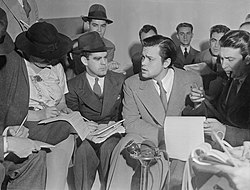| Years in science fiction |
|---|
| History of science fiction Timeline of science fiction |
The year 1938 was marked, in science fiction, by the following events.
Contents
- Births and deaths
- Births
- Deaths
- Events
- Literary releases
- Novels
- Short stories
- Movies
- Awards
- See also
- References
- Sources

